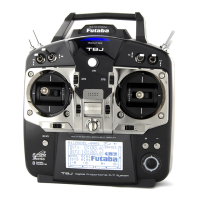19
vibration during flight, provide a slight amount of slack
or extra so that the wire sticks out slightly and fasten it at
suitable points. In addition, periodically check the wire
during daily maintenance.
IMPORTANT: Since the 2.4GHz have different characteristics than that of the conventional 27MHz and
72MHz frequencies, please read this section carefully to maximize your enjoyment of the 2.4GHz system.
Receiver's Antenna Installation:
ntenna
st e kept as straight as possi le.
oa ial ca le
R2008SB Receiver
appearance from the standard Futaba receiver.
These receivers incorporate two separate antennas
into their design which enables them to receive
the radio frequency transmission at two different
locations.
Futaba's dual antenna diversity then seamlessly selects the best signal reception between these antennas to
ensure that there is no loss of signal.
1. The two antennas must be kept as straight as possible. Otherwise
it will reduce the effective range.
2. The two antennas should be placed at 90 degrees to each other.
the antennas away from each other as much as possible.
Larger models can have large metal objects that can attenuate the
RF signal. In this case the antennas should be placed at both sides
of the model. Then the best RF signal condition is obtained at any
3. The antennas must be kept away from conductive materials, such as metal, carbon and fuel tank by at least
a half inch. The coaxial part of the antennas does not need to follow these guidelines, but do not bend it in a
tight radius.
4. Keep the antennas away from the motor, ESC, and other noise sources as much as possible.
asten a o t cm
rom the servo o tlet so
that the lead wire is neat.
argin in the lead wire.

